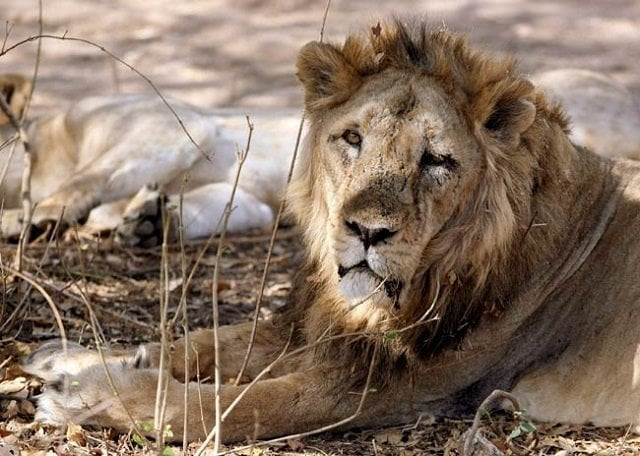India's endangered lion population increases to 600
Only 180 lions were around in 1960s

Asiatic lion PHOTO: REUTERS
The lion, which once roamed across southwest Asia but is now restricted to the 1,400 square kilometre (545 square mile) Gir sanctuary in Gujarat state, was listed as critically endangered in 2000, with its population under threat due to hunting and human encroachment on its habitat.
Birds of prey: Pakistan's vultures are dying out
A recent unofficial count found more than 600 lions in the area, up from 523 in a 2015 census, Gujarat's chief minister Vijay Rupani said.
"Our efforts for lion conservation with support of local people have yielded good results. The number of lions now in Gujarat has reached the 600 mark," Rupani said.
In the late 1960s only about 180 Asiatic lions were thought to survive but an improvement in numbers prompted conservationists to raise their assessment to endangered in 2008.
The population is currently growing at about two per cent a year, according to AP Singh, a state forest and wildlife conservationist.
The cats are cousins of the African lion - they are believed to have split away 100,000 years ago - but are slightly smaller and have a distinctive fold of skin along their bellies.
They are a major tourist attraction in Gujarat where in the past they were the target of poachers.
Priyavrat Gadhvi, a member of Gujarat's wildlife board, credited conservation schemes, well-trained staff and vets as well as help from farmers for the recovery in numbers.
World Wildlife Day celebrated at Lahore Zoo
"There is tremendous support from the local population in Gujarat who are tolerant despite lions attacking their cattle. This is coupled with effective conservation management and skilled staff at ground level," he told AFP.
Gadhvi predicted a "steady growth" in numbers in coming years. The next official census will be in 2020.
Conservationists have suggested relocating some of the cats to another sanctuary, to reduce human-animal conflict and avoid the risk of the Asiatic lion being wiped out by disease or a natural disaster.



















COMMENTS
Comments are moderated and generally will be posted if they are on-topic and not abusive.
For more information, please see our Comments FAQ